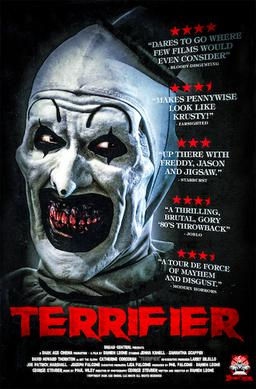Murders in the Rue Morgue (1932) review
- Jeremy Kelly
- Sep 27, 2021
- 4 min read
Updated: Oct 3, 2021
2. Murders in the Rue Morgue (1932)
Directed by: Robert Florey
Produced by: Carl Laemmle Jr.
Screenplay by: Tom Reed, Dale Van Every
Starring: Béla Lugosi, Sidney Fox, Leon Ames, Bert Roach, Brandon Hurst, Noble Johnson, D’Arcy Corrigan

Over the years, I’ve reviewed “The Black Cat” and “The Raven,” both Universal films made in the 1930s adapted loosely from Edgar Allen Poe stories that starred the two horror titans of the time, Béla Lugosi and Boris Karloff. They’re both terrific films that feature the two stars in their best elements; today’s movie, “Murders in the Rue Morgue,” precedes them, and isn’t quite as renowned or polished. But it still stars Lugosi in a villainous role, so we may as well wrap up this pseudo Poe trilogy here today. It’s usually recognized as the fourth film in the Universal horror library, and the first ever sound adaptation of a Poe story—although, as would become the norm, it takes some liberties. What follows is a strange and silly piece of work, but one with solid atmosphere and decent performances.
Taking place in 1845 Paris, we open with a scientist named Dr. Mirakle (Lugosi) who runs a sideshow circus, exhibiting his talking ape Erik. The show is attended by medical student Pierre (Leon Ames), his fiancée Camille (Sidney Fox), and their friends Paul (Bert Roach) and Mignette (Edna Marion). Mirakle, his servant Janos (Noble Johnson), and Erik are all taken with Camille, giving way to Mirakle’s actual intentions. He’s been abducting women—which we see him do with a street prostitute (Arlene Francis)—and injecting them with ape blood, hoping to somehow create the perfect mate for Erik…yeah, I don’t get it either. Anyway, Pierre gains access to bodies from the morgue and discovers a foreign substance in their blood; but is it too late for him to protect Camille before the mad doctor sends his beast to strike again?

So the story actually more resembles “The Cabinet of Dr. Caligari” than Poe, not just with the plot developments but also many of the background visuals, though to not nearly as memorable a degree. But the scenes of Erik carrying Camille on rooftops are definitely reminiscent of German Expressionism, and still pleasing to the eye; in fact, the whole idea of an ape running off with a woman preceded another all-time classic, “King Kong,” which came out only a year later. One major difference, obviously, is the ape itself, which is one of the goofiest aspects of the movie. There are no groundbreaking Willis O’Brien stop-motion effects here; instead the film uses a mixture of a real ape they filmed at a Los Angeles zoo and makeup artist Charles Gemora in a suit, and it’s kind of hilarious how inconsistent it is depending on the situation. This plays into the overall editing being really random and sporadic, although there is some innovative cinematography, like when Camille is sitting on a swing; it was done by Karl Freund, one of the legendary names in the field.
As you’d probably guess, Lugosi is really good as Mirakle, just a creepy bastard who speaks in these really twisted monologues; the scene where he tortures and kills the prostitute led to the movie being censored. This was his first Universal performance following the success of “Dracula,” and he got cast in numerous mad doctor or scientist roles in the following years, and even paired with an ape numerous times. The remaining cast is pretty good; Leon Ames makes for a convincing Pierre, Bert Roach is humorously foppish as Paul, and Noble Johnson makes for a creepy Janos. Apparently, Bette Davis auditioned for Camille, but was rejected by Carl Laemmle Jr. due to a “lack of sex appeal,” and while Sidney Fox is fine enough in the role, Davis definitely would have given her more of a personality.

Despite the overall aesthetics coming out more positive than negative, the mystery itself is pretty dull; for one thing, I don’t really understand why when Pierre is telling police that there’s an ape on the loose, he’s treated like he’s crazy. Is it really such an unbelievable concept? There’s also a really stupid scene—one of only a couple taken from the original story—where the police prefect (Brandon Hurst) is interviewing three witnesses of different nationality. They all claim to have heard Camille screaming and a man—Mirakle, obviously—speaking in a foreign language, but can’t agree on which one, and it devolves into the three of them shouting at each other. It’s funny for a few seconds, but before long, you’re just tapping your foot, waiting for it to be over. The humor is generally subtle, but this feels like something out of an entirely different movie; I also feel like the climax, while certainly exciting, wraps up a little too quickly.
Granted, some of the film’s deficiencies could be attributed to the time period, and the fact that it was supposedly cut down from its original 80-minute run time to barely an hour, which would explain its occasionally rushed pacing. It also may not have helped that this came out sandwiched between some of Universal’s classics; it was directly preceded by “Dracula” and “Frankenstein,” while “The Old Dark House,” “The Mummy” and “The Invisible Man” came immediately after. So while it’s sort of been forgotten about in the course of horror history, “Murders in the Rue Morgue” is still decent thanks to its visuals and mood. I’m definitely not going to watch it as much as “The Black Cat” or “The Raven,” but there is still this vaguely eerie quality that makes it worth a watch.
My rating: 7/10





Comments